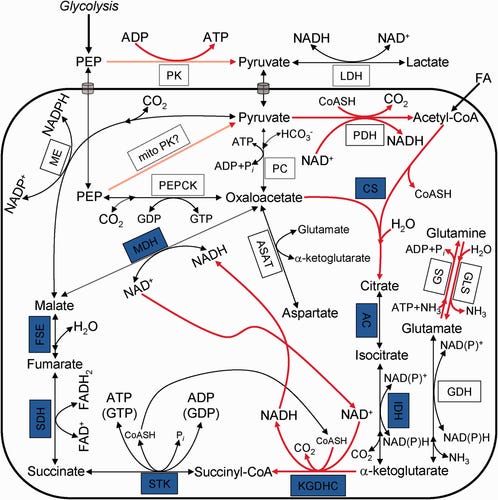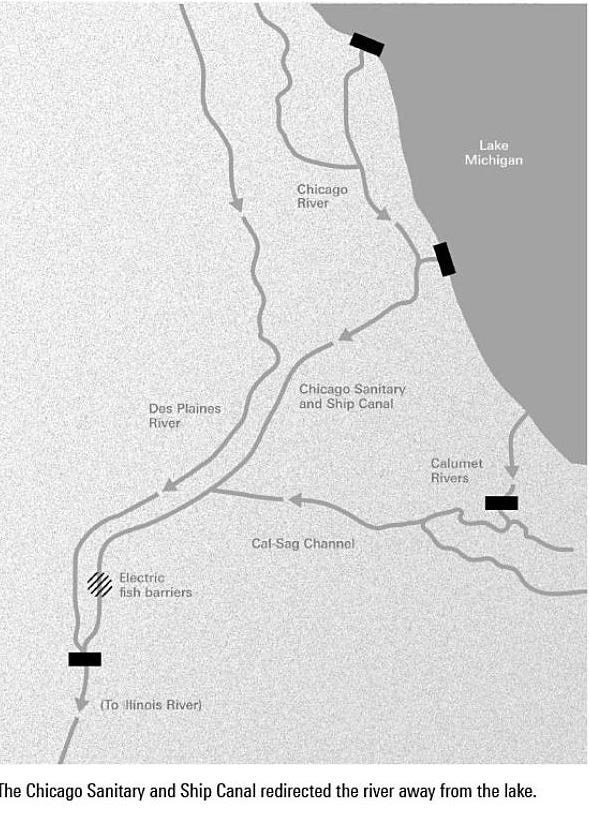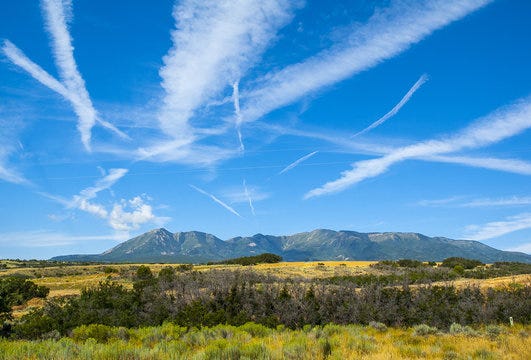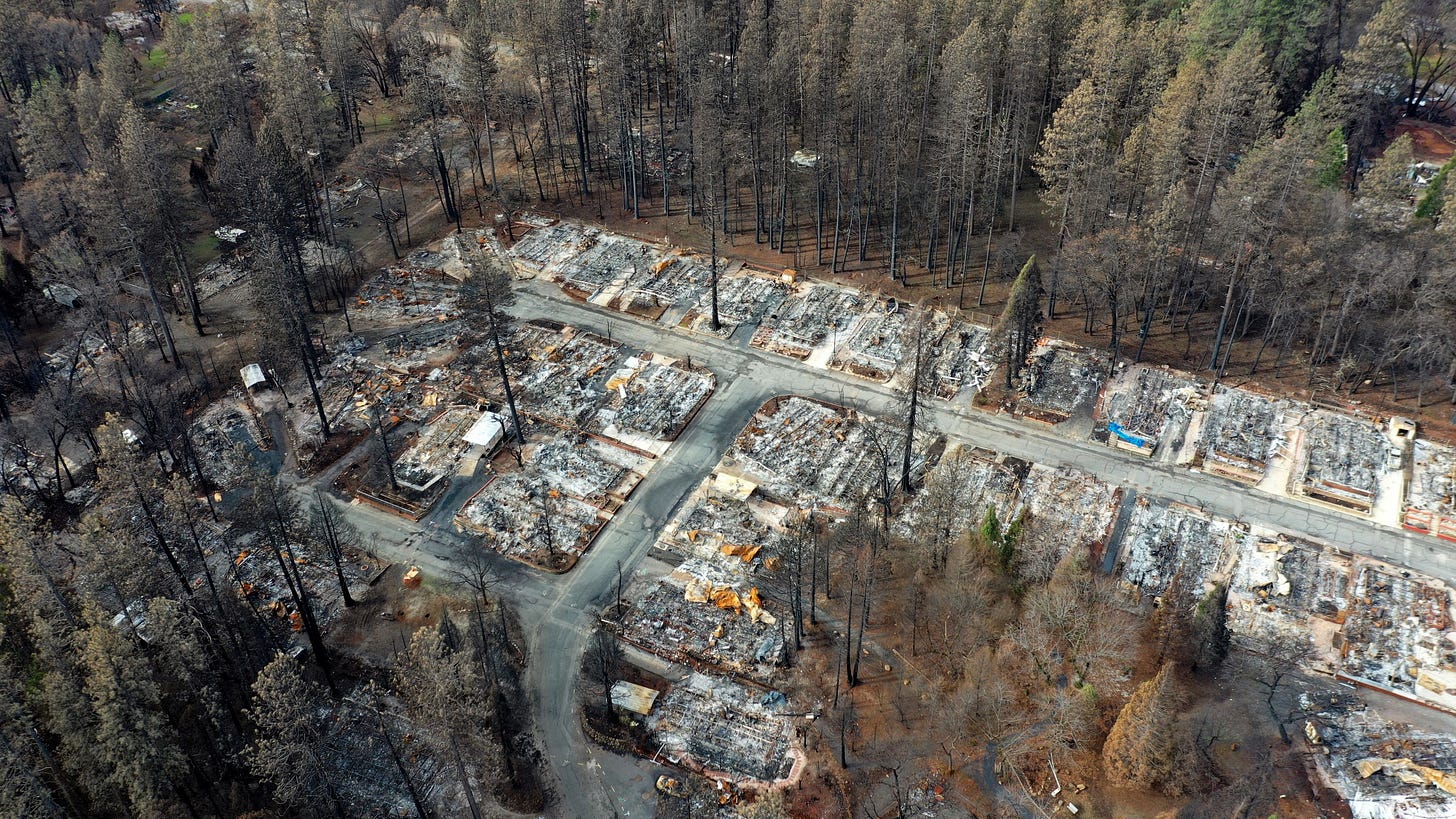Under a White Sky, the Nature of the Future, by Elizabeth Kolbert, Crown Press, 2021 (ISBN 0593136276)
The Dose makes the Poison
Everyone knows that the most important thing to remember if you are running a marathon is to stay hydrated. But on rare occasions, runners have taken in so much water that it killed them. The body’s salts, on which all nervous signaling depends, were too dilute. Yes, even water can be toxic. Too much of a good thing.
This is what happens when linear thinking meets an entangled, complex world. So much of our training, so many of our habits of thought depend on identifying a problem, then working to eradicate it.
Actually, the word “eradicate” comes from the stem, “to root out”. We don’t root out problems, so much as cut them down. We treat symptoms, and when the treatment creates new problems, we set to work with renewed vigor to correct the correction, and when a spate of unforeseen consequences arise, we play whack-a-mole.
This is the story that Elizabeth Kolbert tells over and over again. Human activity has spawned a crisis for Planet Earth, documented in her earlier book, The Sixth Extinction. Our governments and NGOs are responding with rescue efforts. But the projects we undertake arise from the same linear thinking that caused the problems in the first place. We set out to rescue an endangered species, to extinguish an invasive species, to restore a wetland, or to drain a swamp. Our efforts are doomed to failure because we are thinking about one aspect of an ecosystem with little understanding of the whole.
We cut down forests and planted tree farms for a century before we figured out that a tree farm is not a forest. We still haven’t assimilated this message.
Our knowledge of biology is grotesquely out of balance. We have, in the last 50 years, picked apart the biochemical basis of life. We know which signals bind to which receptors and can map the cascade of chemical responses, even if we don’t know how to control it.
Ecosystems are just as complex and interdependent as biochemical pathways, but we have mapped none of them. It’s because our science is bottom-up reductionism. From quantum physics to evolutionary biology, we have been slow to recognize nature’s holistic aspects.
The Mississippi
The Mississippi is the longest and widest river system in North America. Centuries ago, American natives built their communities around its water and its fertile silt. They moved when the river flooded. Those who lived near the river delta at the Gulf of Mexico relocated every few years when the Mississippi re-sculpted the landscape.
Adaption to an ever-changing river worked well for farming villages built on communal sharing, with simple shelters that could be rebuilt with a few weeks’ work. It is not compatible with permanent structures and capitalist property rights. So we migrants from Europe have been building dams and levees, stocking fish and poisoning invaders for two hundred years. We’re just trying to protect our capital.
In 1885, the city of Chicago realized they were poisoning their own Lake Michigan drinking water by dumping their sewage into the Chicago River. The Chicago River flowed East. They conceived the Sanitary and Ship Canal as a way to send their sewage West to the Mississippi, where it would be someone else’s problem.
The Canal actually reversed the flow of the Chicago River from East to West. It cost $30 million, and opened in 1900. Today, the great fear is that Asian carp from the Mississippi will get through the canal into Lake Michigan, and from there, they will overturn the ecosystems of all the Great Lakes and the St Lawrence River. With dams and electrification and “bubble barriers” and poisons, the region is spending $30 million every month to atone for a short-sighted project 130 years ago.
The Asian carp, of course, were not native to the Mississippi. In the wake of Rachel Carson, they were imported to the lower Mississippi as an “eco-friendly” way to control insect populations without the devastating toxicity of DDT. But four species of carp proved to be super-competitors, and they have spread to dominate the ecosystem of the entire Mississippi system, driving out native fish species as well as snails, mussels, and even the algae that form the base of a wider food chain.
At the mouth of the Mississippi, engineering efforts to keep the land mass from shifting with each year’s floods and each year’s load of silt are even more expensive, and even more questionable in their long-range efficacy.
Morality Tales
And God said, Let us make man in our image, after our likeness: and let him have dominion over the fish of the sea, and over the fowl of the air, and over the cattle, and over all the earth, and over every creeping thing that creepeth upon the earth.
— Genesis 1:26
Five thousand years later, how’s that dominion thing working for you? To make her point about unintended consequences, Kolbert cites the unimpeachable moral authority of Dr Seuss.
A ring in the tub! And, oh boy! What a thing!
A big long pink cat ring! It looked like pink ink!
And I said, “Will this ever come off? I don’t think!”
“Have no fear of that ring” laughed the cat in the hat.
Why, I can take cat rings off tubs just like that!”
Do you know how he did it? WITH MOTHER’S WHITE DRESS!
Now the tub was all clean, but her dress was a mess!
Kolbert explores in depth three ecosystems and the unintended consequences of man’s efforts to control nature. She makes every effort to be even-handed in cataloguing the benefits as well as the costs. Her instinct and ours is to yell, “Stop! Stop already!”
When you find you are in a hole, the first thing to do is to stop digging.
But she makes us aware, in each case, just how costly that would be. If we accept that our prosperity, our comfort and our security are built on a global supply chain and powered by capital, then the costs of not controlling nature are astronomical. I’m reminded of the two thousand year old man in Aaron Thier’s novel, looking back from the 23rd century, “But I remember a fellow once told me it were all just ecknomicks. It were too expensive to save nature it were cheaper to destroy it.”
It is almost certainly true that we must escape the capitalist paradigm before the human community has the will and the means to act collectively, to pull back from the “progress” that is linked to our nose-dive into oblivion.
The Third Chapter
Kolbert’s title (the white sky) derives from the final chapter of her book, which is IMO the most problematic. It is about CO2, climate change, and geoengineering. The white sky is a plan to use jet aircraft to seed the upper atmosphere with droplets or particles that would reflect sunlight back into space and prevent the earth from warming. Is this the only way to halt our temperature-induced ecocide, or is it human hubris gone mad at the level of an entire planet?
Kolbert’s logic is as concise as it is devastating:
All of human progress depends on energy, and the ways that we know to produce enough of it generate CO2.
CO2 in the atmosphere is causing warming that threatens all the world’s ecosystems, on which human life (and all life) depend.
To scale back our burning of fossil fuels quickly enough to avert disaster would be unimaginably disruptive and would impoverish us all.
We’re left with the idea of geoengineering on a vast scale to compensate for the excess CO2 and cancel out its warming effect.
The prospect of a project this large is fraught with risks of vast, unintended consequences, as earlier chapters of the book have illustrated.
Humanity faces unacceptable choices either way. We’re damned if we do and damned if we don’t geoengineer.
I think Kolbert gets this wrong. (1) I think that we don’t know enough to undertake geoengineering. (2) I think it’s unnecessary. (3) And I think we’re already doing it.
(1) We don’t know enough
Anything we do to modify the earth’s climate is likely to have unforeseen repercussions on a global scale. Kolbert covers this argument well, after preparing us through all her earlier stories of agencies trying to engineer their way out of the consequences of earlier engineering projects.
Electric cars and electric heating systems only displace the burning of fossil fuels to the power plants. Mining the cobalt and lithium for batteries has created environmental disasters of its own.
Pumping CO2 into the ground entails high costs in energy as well as in dollars.
“Carbon offsets” are already being gamed by entrepreneurs who often do more damage than they offset.
Cutting down forests to bury the trees stands out even among a gaggle of mad scientist schemes.
But, as Kolbert implies, stratospheric spraying from airplanes (aluminum particles or fly ash or sulfuric acid) represents hubris on a breathtaking scale. We have no idea what the cascade of auxiliary effects might be.
(2a) It’s unnecessary because there are alternatives available
Solar cells, windmills, hydropower from dams are all renewable with low carbon footprints. But there are limits to each of these
Amory Lovins of the Rocky Mountain Institute has been telling us (with wit and verve that cap his mastery of engineering issues) for four decades that the most economical energy source is what he calls “negawatts” — redesigning the use of energy at the back end to do the jobs we need with far less energy than we use now. Buildings, cars, and industrial processes were all designed in an era of cheap energy, and they are not optimized for today’s energy prices. Cars that get 200 mpg are already on the road. It is economical to design buildings that need no heating plant because they are super-insulated and ventilation is heat-exchanged between incoming and outgoing air. RMI’s headquarters in Snowmass, CO has no furnace. The cost of the extra insulation, special windows, and controls is offset completely by the saved cost of a heating plant with ducts and pipes that cost money and reduce the usable space of the building. Industrial processes use long, thin, crooked pipes when short, fat, straight pipes would require dramatically less pumping energy.
Cold fusion is a practical, portable technology for extracting nuclear energy from heavy hydrogen, a fractional constituent of ordinary water. Last February, I wrote about cold fusion as a suppressed technology. In 2012-14, I visited 5 laboratories and attended two conferences, interviewed a dozen researchers, and came away convinced that cold fusion is a reality in dozens of laboratories around the world. It has not been commercialized because some powerful interests do not want it commercialized. Since 1972, the US dollar is backed by oil that is priced in dollars worldwide.
Beyond cold fusion is zero point energy. I wrote about the possibility of energy from the vacuum just last month, and I suspect that this, too, is a suppressed technology, though I lack the direct, personal experience that has convinced me of the reality of cold fusion.
(2b) It’s unnecessary because the effects of increased CO2 are less severe than claimed and are, in balance, beneficial
This topic deserves a book, and Charles Eisenstein has written that book. I can only outline a few points here.
In August, I published this graph, showing that earth’s mean temperature cycles up and down by more than 10 degrees Celsius on a regular schedule, approximately every 100,000 years.
We have been near the peak of the latest cycle since long before humans began burning fossil fuels. Humans have capped off this 10 degree rise, adding 1 degree of anthropogenic warming (in red). The norm over the last million hears has been much colder temperatures, with ice sheets covering most of Europe and North America.
Most paleontologists agree that the rise of civilization over the last 6,000 years has been facilitated by an unusual, extended period of low solar activity and warm temperatures. Warmth and extra CO2 in the atmosphere both make agriculture more productive. Faster plant growth nourishes the food chain from the bottom up, and the whole biosphere has prospered during these times of ice-free continents and high atmospheric CO2.
Climate models are fraught with uncertainty, and a climate of political correctness has dictated which ones are publishable.
Finally, most of the storms and fires and droughts and other weird weather for which “climate chaos” has been blamed are not natural, but are rather evidence of weather warfare in many forms. This is an argument which Eisenstein does not make in his book, and I am on my own. See below…
(3) We’re already doing it
The sky over my home in Philadelphia yesterday was criss-crossed with chemtrails, still visible and still spreading, hours after the planes had gone by. This pattern is a frequent occurrence now, but I can remember a time 30 years ago when the sky never looked like this. The primary evidence for the reality of chemtrails is first-hand experience.
This is a big topic on which you likely already have an opinion, either believing or disbelieving the reality of chemtrails. If you are not sure that what your eyes are seeing is different from 30 years ago, and if you are open to learning from people who have studied the topic, then Dane Wigington’s introductory video is a good place to start. Dane’s tone is a bit breathless, but his information is sound. He starts with patents and open discussions of weather modification that go back 100 years. He shows videos of planes in-flight turning their chemtrails on and off. In the soil underneath, elemental aluminum and barium have begun to appear in places where the soil was free of these elements a few years ago.
I think that Dane presents irrefutable evidence that chemtrails derive from deliberate spraying in the stratosphere, but I am not so sure he is right about the motive. Dane’s theory aligns with Kolbert’s thesis, that the spraying is to create cloud cover that can reflect the sun back into space and remediate global warming. If this were the motivation, I don’t think it would be done secretly. I also think that global warming is much less of a problem than habitat loss, biodiversity loss, plastics, toxins, and a host of other environmental effects. I think the Powers that Be know this, and they are motivated by something very different from rescuing the earth’s ecosystems.
So, what is the motivation? My best guess is that it is part of a weather warfare program. The metal particles deposited in the stratosphere are targets for giant radio broadcast stations such as HAARP, which are used to move air masses and control the weather in particular areas.
I think that the kinds of weather events that we are seeing look like sabotage, and they are not anything you would expect from 1 degree C of anthropogenic warming.
108 degrees F in Seattle in 2021 (42 C)
Hurricane that came out of nowhere this past October and destroyed Acapulco, but nowhere else
Fires in Quebec last June that all started at the same time and sent their smoke south and west, against prevailing winds, to hover over the populous part of the US, from Boston all the way down to Washington DC. That’s 800 miles from the fires, in a direction opposite to the way the winds would be expected to blow.
The hurricane and fire that destroyed cars and houses Lahaina left the expensive estates untouched and melted hubcaps while nearby trees were unsinged. The results were awfully convenient for the Governor’s gentrification plans, and secrecy only heightened suspicions about other aspects of the disaster.
Fires in N California in the 2000s sometimes behaved the same way, burning houses and melting cars while leaving trees untouched.
Seeing all this, I look back at the decade-long drought in California (2000-2009) and wonder if it might have been an extended attack on our food supply.
It’s clear to me that humanity is under attack. Our food supply, our relationship to earth — a distribution of earth’s bounty that could provide comfort to all humanity is being siphoned to a few billionaires while 2 billion humans lack basic necessities. Even the simple but satisfying life styles of subsistence farmers in traditional cultures around the world are being sabotaged. The psychological attacks are a essential to obscuring and enabling all the physical attacks. We are controlled with fear, and our venerable traditions of free speech are eroded by censorship and the arguments that legitimize it.
Why would anyone do such a thing? I don’t have an answer.
Agriculture and its alternatives
There is an underground meme (traceable to Jared Diamond) that says, agriculture was humanity’s founding mistake, the root of all the trouble we are in at present. The natural and obvious rejoinder: What’s the alternative? Are we to go back to being hunter-gatherers?
I suspect, but can’t prove, that there is a third alternative. Wise management of ecosystems can be more productive (per acre, not per dollar) than the monoculture that dominates today’s factory farms. It is possible to manage forests and meadows and even ocean ecosystems in a way that produces enough food to feed 8 billion humans sustainably, with recycling of nutrients and control of parasites maintained by stable ecological balance. No pesticides, no fertilizers.
There are a small number of people actively pursuing this science today, and there is evidence that some of the natives peoples who lived for thousands of years on the American continent before it was “discovered” were doing just this. Their oral traditions provided ecological wisdom that dwarfs the Western scientific pursuit of analytical ecology.
This is my hope for humanity’s future.
Summary
Kolbert does a good job of being even-handed in describing the need for environmental engineering and the dangers of environmental engineering. In my case, she has been far more convincing about the dangers than the need. We should not be damming rivers and poisoning species that we don’t like. We should not be modifying genomes. We should not be engineering new pathogens (“dual use” biowarfare agents) in the name of “pandemic preparedness”. Most definitely, we should not be spraying the stratosphere with anything at all.
Environmental degradation and ecosystem collapse are very real, and we are the culprits. Until we understand a great deal more than we do at present, our approach must be to scale back our environmental footprint, not to try to remediate the damage with new engineering projects.









Josh, I don't know if you saw the recent story regarding the US Fish and Wildlife and the Spotted Owl debacle in the Pacific NW. They've now decided the only way to save the Spotted Owl is to hire hunters to go into the forests and kill 500,000 Barred Owls who are taking habitat away from the Spotted Owl. This is after utterly destroying the local lumber and forestry industry in the small towns of the NW for the past 30 years.
These small towns and communities were beautiful places with good jobs, well funded schools and public services paid for from the forestry industry. Now, of course they are filled with unemployed, drug addicted people whose livelihoods and communities were destroyed by zealots whose hubris did nothing to save the owls. Our forest are unhealthier than they've ever been. These big city "ecologists" who wouldn't know a Douglas Fir from an Oak now want to kill a half million owls- the knock on effects of this are bound to cause a hundred new and bigger problems for our forests. Solutions, straight out of the Leninist playbook-just eliminate the Kulaks and paradise is around the corner.
These people couldn't manage a sporting goods store, yet they control our economy, our land and natural resources and increasingly our minds. Everything they touch gets bigger, more complicated, uglier, more expensive and destroys countless live. It's beyond depressing.
In my experience, most physicists have too much confidence in technology so they don’t look at problems in a more holistic way. There’s no need to emulate the Microsoft campus in Washington state that removes a ton of CO2 every day from the atmosphere— mycorrhizal fungi would do that for free, while building soil fertility and doubling crop production. Since Kolbert doesn’t mention regenerative agriculture, that suggests that she has never heard that, according to Professor David C. Johnson, mycorrhizal fungi could sequester enough CO2 in 15 years to get the world back under 350 ppm (https://holisticmanagement.org/wp-content/uploads/2015/05/Quivira_Johnson1.pdf), while simultaneously making our soil more fertile and more water absorbent so that downpours don’t run off but, instead, recharge aquifers.
All of Kolbert’s trust in Ai ignores the hazards WiFi, which have been suppressed by a huge media blackout, but when the cancer rate and multitude of other health problems cannot be ignore any longer, then we’ll realize how we were duped. Our microwave exposure is now a billion times more than our natural exposure during evolution. It is especially harmful to growing children, but the FCC does nothing to keep WiFi out of schools.
I’ll bet Kolbert never mentions the high level of toxic nano aluminum particles that already rain down on us from the unacknowledged geoengineering that is currently going on. Contrails from water vapor emitted by jet engines last seconds. Chemtrails last all day, spreading out and polluting the land and water as the particles gradually fall out. How can everyone ignore the slate haze and the “new” clouds that replaced the fluffy ones of the 1950s?
When I try to explain this giant secret visible to anyone who looks up, people get indignant, “They would never do that to us!”
But, as Arthur Conan Doyle’s Sherlock Holmes says, "Once you eliminate the impossible, whatever remains, no matter how improbable, must be the truth." It’s impossible that contrails (water vapor) can fill the skies that much, which leaves an intentional program that is obviously top secret since we never hear about it except from “conspiracy nuts.”
Remember Fermi’s Paradox! To paraphrase: “In the vast universe, it’s statistically impossible that we are the only sentient beings.” If our human cultures on Earth are simply a microcosm of the universe, then there would be Bad Guys out there in our galaxy and all the other galaxies, which makes the whole Reptilian conspiracy theory less strange. If Star Wars can make the Battle of Good and Evil an endless series of movies, then the secret control of human cultures by Reptilians is just as likely.
And such a controlled planet as Earth would also have plandemics, fake climate warming, direct energy weapons (DEW) burning down towns with fires that melt metal but don’t kill trees. And such a world would have reasonable, likeable, caring people like Kolbert writing books like this to deflect any smidgens of curiosity from spreading.